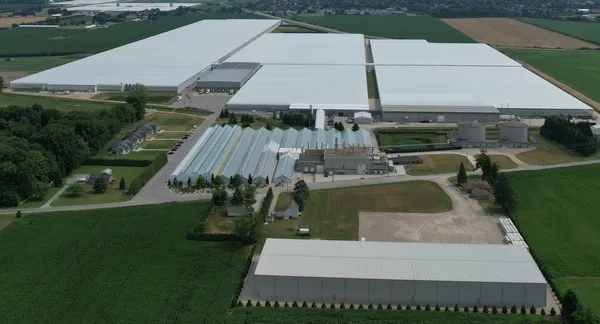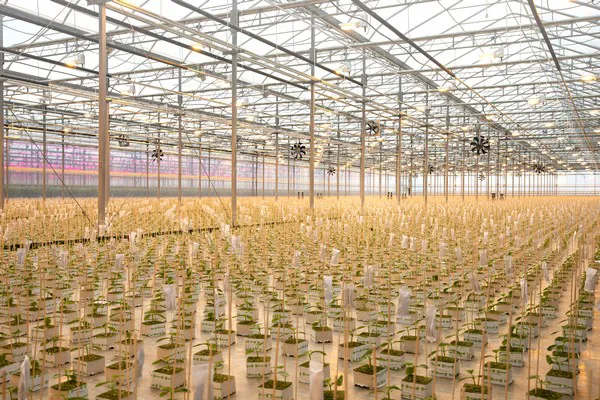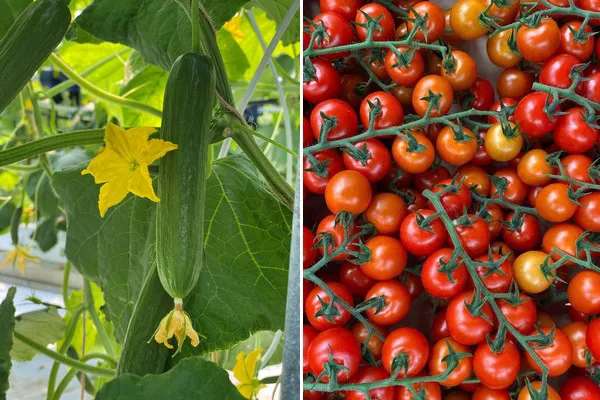The greenhouse industry continues to undergo rapid changes in North America. Demand has increased significantly in recent years, consumers have become more demanding, gas prices are up, and climate changes are noticeable around the world. “It is an exciting time to be in the greenhouse world as we play a crucial role in feeding families,” says Jeff Richardson with Great Lakes Greenhouses. The company was founded in Leamington, Ontario, Canada, over 39 years ago and has grown to be one of the largest growers, shippers, and packers of hydroponic cucumbers in North America.
Great Lakes has been owned and operated by the same family since its foundation in 1983. The company grows long English cucumbers under 72.5 acres of polly. In addition, 14 acres of conventional mini cucumbers, 14 acres of organic bell peppers, 10 acres of organic TOVs, four acres of organic beef and cherry on-the-vine tomatoes, as well as 3.5 acres of organic mini eggplants are part of the portfolio.

Hands-on ownership to guarantee quality
To adhere to the demand of today’s consumer, controlling quality, consistency, and supply have become key. “To ensure quality from seed to plant, we propagate our own plants,” said Richardson. “We control the entire process from seed to shipping and feel we get to grow a better plant by doing it in-house.” Every two weeks, about 120,000 plants go into the four-acre propagation site, with the flood floor being its showpiece. The floor has been made by European design and allows Great Lakes to sterilize the water, preventing root diseases in young plants. Water for the plants comes up through the floor as needed, and sprinklers are used to take the heat off the plants. Once ready to be transplanted, four acres of propagation area fill approximately 20 acres of the greenhouse.
Many Canadian greenhouse growers have expanded facilities into the United States in recent years. Great Lakes, however, believes they are able to offer better quality control by having just one facility. “Our owner is very hands-on, working in the greenhouse seven days per week to make sure we continue to deliver on quality and consistency.”
 Propagation site.
Propagation site.
Climate change
Global food supply has become a challenge, largely caused by disruptions. Where weather events like flooding, hurricanes, and droughts used to be rare, they have now become the norm. With controlled environments being able to continue to deliver consistent supplies, the importance of the greenhouse industry has exploded. “No matter what the weather disruption is, in a controlled environment like a greenhouse, we are still able to control consistency, quality, and supply,” said Richardson. “Field production, on the other hand, is directly impacted when a significant weather event does happen. As a result, the greenhouse industry has become key for survival.”
Expansion of commodities
The importance of the sector has resulted in the expansion of greenhouse acreage in recent years. Between 2016 and 2020, Canada’s harvested area of greenhouse-grown vegetables has gone up from 15.9 million square meters to 18.1, an increase of 13.5 percent. During these years, the acreage of traditional commodities like tomatoes, cucumbers, and bell peppers has remained relatively stable. However, the area with lettuce, strawberries, herbs, and eggplant under glass has increased dramatically.
“When I was a kid, people didn’t think about strawberries in winter, but now, everyone wants them year-round,” said Richardson. Younger generations, in particular, expect a 12-month supply, and this has now become the standard. Due to climate change, supplies of field-grown strawberries have become more inconsistent. This, in combination with increasing demand, has resulted in greenhouse-grown strawberries becoming a necessity.
Although Great Lakes hasn’t ventured into strawberries under glass yet, the company is actively trialing multiple new commodities for their greenhouses. In general, there are lots of trials with different berry varieties taking place. “It has to work in terms of yield and returns, but it also needs to be the right fit for our partners. If the right opportunity presents itself, we are able to adjust very quickly and add a new commodity to our offering.”

Cost increases
Lately, the greenhouse industry has been significantly impacted by an increase in gas prices. “At Great Lakes, we are fortunate to be 100 percent off the grid. In an effort to do more for the environment, management took us off the grid several years ago,” commented Richardson. A large co-gen room allows the company to generate electricity and capture heat at 90 percent efficiency. It was a large investment, but in this environment, being off the grid significantly reduces the company’s operating costs.
However, other costs like labor, packaging, pallets, and freight are seeing astronomical increases. In some parts of the world, greenhouse growers are making the decision to shut down operations as the costs have become unbearable. “We are not seeing that happening in Canada, but we do see expansions being put on hold.” Growers want to get a better understanding of the situation before they decide to make investments. As a result, the brakes are being put on expansion plans right now.
 Co-gen room.
Co-gen room.
Growth of vertical farming
Another change in the greenhouse landscape is the development of the vertical farming industry. What are the thoughts on that from the perspective of a traditional greenhouse grower?
“Food supply needs to increase in order to be able to feed our world population. If the demand continues to progress as it has over the past few years, we would be in crisis very soon. I strongly believe high-density farms are the right thing for what we need,” said Richardson. Up until now, vertical farms have mainly been growing lettuce and leafy greens products, which helps to accelerate supplies. “I am definitely not looking at them as being competition because they are doing the right thing for our population base.”
“The developments in the greenhouse industry bring so many positive opportunities. It is really exciting, and I am proud to be part of that,” finished Richardson.
 For more information:
For more information:
Jeff Richardson
Great Lakes Greenhouses Inc.
Tel: +1 (519) 987-3520
Jeff@greatlakesg.com
https://greatlakesg.com/
